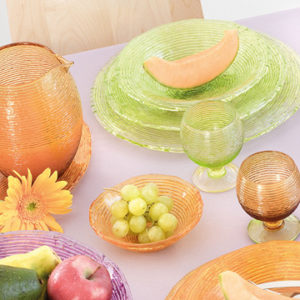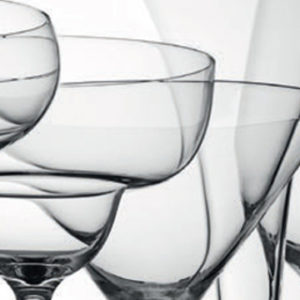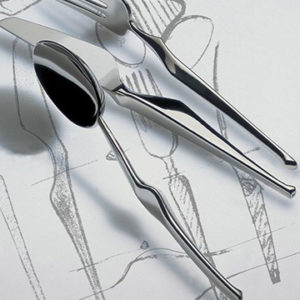My journey through the history of artistic movements continues with the 18th century, when Neoclassicism developed in Europe. This new style was a reaction to the Baroque and Rococo movements, it was rational and elegant, characterized by geometric forms and linear decorations. It gave a great attention to classical art, which can be noticed in the interest in Greek and Roman ornaments.
The most important theorist of Neoclassicism was the German Johann Joachim Winckelmann who believed in the imitation of classical art as an inspiration for the forms and contents. This approach was opposed to religion, which until then occupied a central role in society. Art came to cover a new social value, a public character like never before.
In Italy, the Baroque style was generally still preferred; nevertheless, the architect Giambattista Piranesi created some exemplary neoclassical designs. Rome became the capital of Neoclassicism and Piranesi himself worked in the city where he promoted a new taste for Roman ruins and antiquities.
Another important Neoclassical city was Milan, with its Brera Academy, establishment that formed the greatest exponent of Italian neoclassical painting, Andrea Appiani.
In painting the religious subjects almost completely disappeared and gave space to historical themes. There was an almost photographic realism with cold colours, few light effects and sharp profiles, leaving the observer distant rather than more a participant to the scene. Appiani was one of the official portrait painters of Napoleon and in his works he recreated an image of real contemporary society.
Antonio Canova was the greatest Italian neoclassical sculptor and in his works he usually used white marble, material he could make harmonious, while his subjects seemed to have their own movement. He studied the Greek sculpture and he gave a lot of importance to the preparatory studies, sketches and models in wax or clay. He represented the elegance and the beauty of eternal and became the official sculptor of Napoleon. His works were always linked to glorification or animated by feelings such as sadness, compassion and sensuality.
In Italy Neoclassical architecture produced a lot of remarkable works – buildings, churches, theatres, barracks, hospitals were the perfect scenarios for this style. This is when the concept of urban planning in the modern sense was born, because the city was the main theme of civic life. Piranesi in particular played a huge part in the Neoclassical recovery of the ancient bringing it into the present. His studies were the inspiration for the works that greatly influenced the culture of the time. However, his architectural production was limited and considered traditional and closer to the Baroque.
In this period, Milan above all other Italian cities experienced an intense building activity that changed the urban plan of the city forever. Architect Luigi Canonica affirmed the new architectural trends with Villa Reale in Monza and the amazing project of Arena in Milan, a highly challenging design that changed the look of the areas around Castello Sforzesco.
From North to South we can admire a lot of examples of Italian Neoclassical designs.
In Rome, extraordinary monuments were created that still reminded of the Baroque and Rococo culture, such as Piazza di Spagna and Fontana di Trevi, but the renovation of Piazza del Popolo represented a masterpiece of Italian Neoclassicism.
Pasquale Poccianti was the most significant architect in Tuscany, carrying out high-profile works for Palazzo Pitti and Biblioteca Laurenziana in Florence.
In the North East, Trieste covers a major role in the Italian Neoclassicism, its historical particularities influencing the urban aspect to date. The most emblematic architecture in this sense is Chiesa Sant’Antonio.
NEOCLASSICISM IN INTERIOR DESIGN
In modern interiors the neoclassical style is lush and elegant, reflecting the great influence played by classical art.
The main colours are bright, such as grey, light blue, green and cream. Wallpaper in geometric, floral or Classical designs is also appropriate for decorating interior walls.
The furniture is geometrical and made of dark wood, while the floors are usually in marble or stone. The fabrics are cotton, wool, silk and brocade. Columns, statues, vases, pottery, big mirrors and artworks are used to decorate the interiors for a really luxurious look.
NEOCLASSICISM IN FASHION
The Neoclassical taste came back into fashion in the last Valentino’s runway for the Spring/Summer Collection 2015. Ethereal and lightweight dresses rich of transparencies have the aesthetic taste of the Greek and Roman statuary beauty.
Great sensuality breathes in the clothes that expose the nudity of the models and enhances the essentiality of lines and silhouettes. Silk and broderie Anglaise are the main fabrics of the collection. The main accessory is sandal twisted up to the calves, reporting back to the look of yesteryear.
Floral prints and ruffles, wide necklines, voluptuous skirts and puffy shoulder pads represent the “Nude Fashion” as it was called in the 18th century.







































